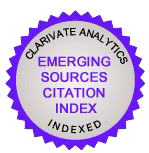Николай Ставрогин и король немецкой барочной драмы: драма судьбы и меланхолия
Palabras clave:
Dostoevsky, Benjamin, drama, Stavrogin, melancholyResumen
In my article, I will analyse the letter-confession of Stavrogin addressed to Dasha Pavlovna on the basis of Walter Benjamin’s essay The origin of German tragic drama.In my opinion, Stavrogin’s reflections bring him closer to the Trauerspiel main character: Benjamin defines German tragic drama the “drama of fate”, because the king tries desperately to realize himself as a personality, but his actions lead to the exact opposite.
Similarly, despite the fact that Stavrogin is aware of the deep impact of his behavior on the reality, he still is not able to overcome his own moral unfitness, and the consequences of this failure are inevitably tragic. Furthermore, Stavrogin’s inconsistency, along with his indifference to the feelings, made him as vulnerable to melancholy as the king of German tragic drama. Actually, this melancholy is manifested as a deep sense of boredom, apathy, and sometimes, as a special impulses of anger. Although melancholy gave these characters also extraordinary intelligence and sensitivity, on the other hand, she makes them vicious and envious.
According to Walter Benjamin, the melancholy pushing to Evil is paradoxically the first real step towards the victory of Good, just death refers to a new life. Given these considerations, however, I think that the end of life Stavrogin is not a significant example of this process, because he comes to meet his own death, apart from its symbolic anticipation of the Resurrection: it’s just an escape from their responsibility. In fact, Nikolai is absolutely aware that he had betrayed his mission to be the new “Ivan Tsarevitch”.
Descargas
Descargas
Publicado
Cómo citar
Número
Sección
Licencia
Los autores conservan los derechos de autor sobre sus trabajos y garantizan a la revista el derecho de ser la primera publicación del mismo. Los artículos se publican bajo la licencia Creative Commons Atribución-NoComercial 4.0 Internacional (CC BY-NC-SA 4.0), lo que permite a los lectores y otros investigadores copiar, redistribuir, remezclar, transformar y construir a partir del material, siempre que se respeten las condiciones establecidas.












